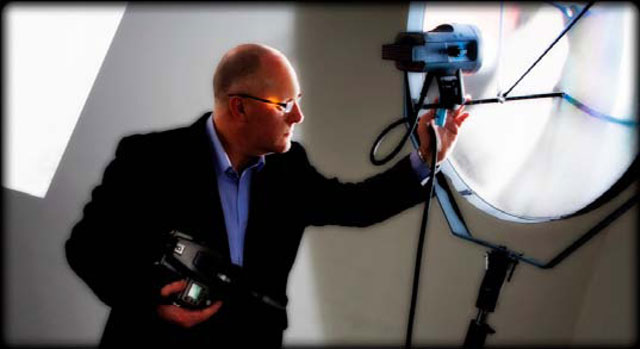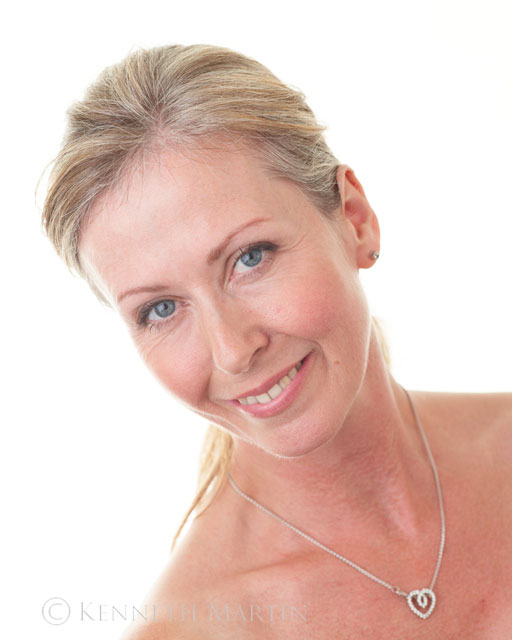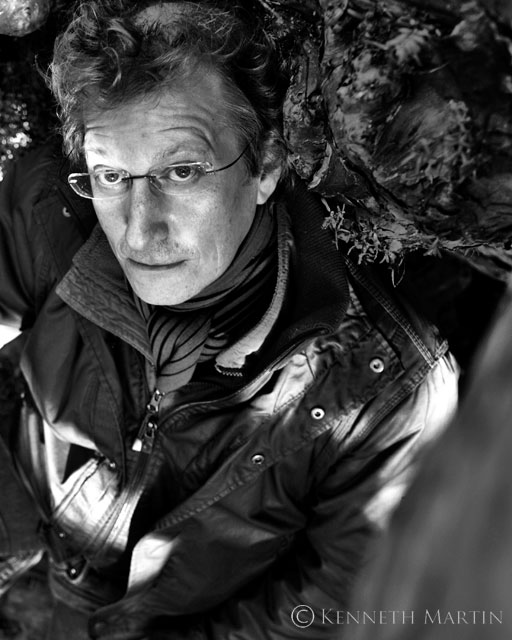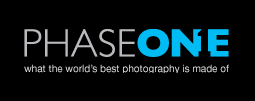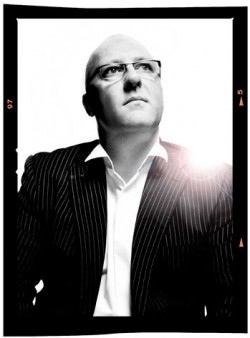
After Two months with the Phase One DF Camera by Kenny Martin
Before we start I should confess that I have been shooting with Phase One Digital Backs since the introduc- tion of the Lightphase in 1998, so I do admit that I write this review with a positive outlook of the Phase One family of products. On saying that I am in no way being rewarded for my efforts in writing this review and my thoughts and conclusions, (both positive and negative ) are entirely my own. I started shooting Phase One tethered by firewire to the computer with my original 6mp Phase One Lightphase Digital Back which was paired with, what was in retrospect a very poor Mamiya 645, upgrading through the past 12 years to 11mp, 16mp, 22mp and 32mp backs all paired with the Hasselblad H system, to finally this latest and greatest incar- nation, the Phase one DF Camera, in my case paired with a P40+ back. I looked at the P65+ back but I felt the extra resolution was really unnecessary for my needs, more expensive, bigger files, more storage required etc. I was more than happy with the files from my P30 back and have a couple of 50" display prints in my gallery which are simply astounding, so why upgrade to a P40+ you may ask?
This is a question I had to ask myself before committing a large amount of hard earned cash to buying the camera. There are a few key reasons, not the least being Hasselblad's crazy decision to 'lock' their system to their own body's and backs. In many respects I was very pleased with the actual camera system and lenses, however as my H system bodies were coming to the end of their working life, I had a very serious decision to make, stick with the Hasselblad and upgrade to their own system, move lock stock and barrel to 35mm or go for the new Phase One Camera.
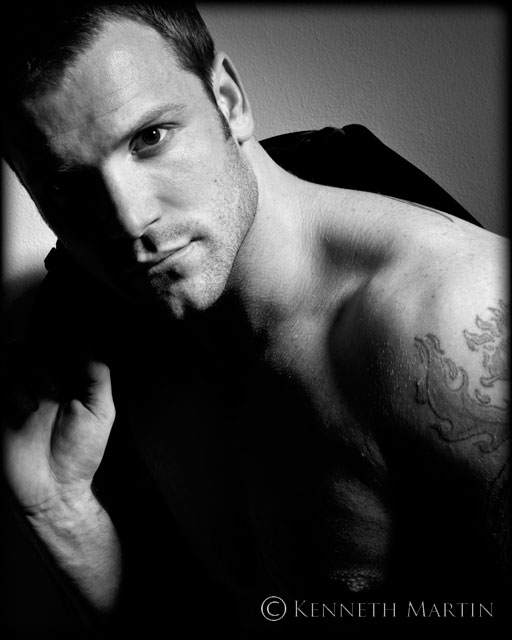
The Hasselblad option was one I seriously considered but being a committed Capture One user I was never really happy with the Hasselblad Phocus software, I somehow always found the files to be rather unnatural, feeling the colours were a bit too rich and over saturated, and a direct comparison between Capture One files and the Phocus files reveal much more natural tones from Capture One, which I also find a more instinctive and intuitive program to use. So Hasselblad have in many ways shot themselves in the foot as I would
most likely have stuck with my P30 and upgraded my body's, keeping the excellent range of lenses and making it a very inexpensive upgrade. The second option was the 35mm route and to be honest I also seriously considered this option as the amount of money I was about to invest on the Phase One camera would have bought me the ultimate 35mm system, how ever as a committed medium format user for some 26 years or so, I have never really been that comfortable with 35mm. the medium format way of shooting suits my style and it demands a more considered approach, in some ways I feel the move to 35mm shooting has diluted the craft and quality of professional photography and it seems now that 1000's of images need to be shot at a wedding and hundreds of images on a portrait session, as if this machine gun shooting somehow can compensate for quality.
Some of you folks reading this review will not know it, but before the advent of 35 mm digital it used to be the norm to shoot medium format, every professional photographer I knew during the 80's and 90's shot with either a ‘‘‘Blad or Mamiya RB or RZ67, it really was that straight forward.
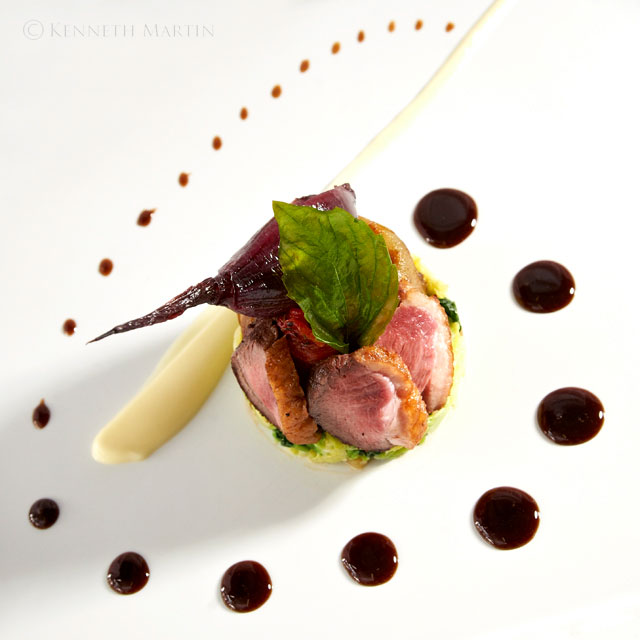
Food
Shot in the kitchen during a busy night service at the Horseshoe Inn, Peebles. I would normally be using a tripod for this type of work, but as the entire Al a Carte menu was be- ing shot and there was a lot of moving about and chefs walking back and forward through
the (very small) set as I was shooting, I decided to shoot hand held with the Phase One Camera so to be able do dodge out of the way of the chefs when needed. I would normally prefer a slightly longer lens for this type of shoot but the 110mm f2.8 leaf shutter lens has worked beautifully in this case with just about the perfect depth of field for the shot.
Phase One DF Camera / P40+ Back . 110mm Leaf Lens . Bowens 750 digital with small dish reflector from right with several small hand made kitchen foil re- flectors positioned around . Hand Held . 50 ISO . 1/250s @ f5.6 . WB - Flash
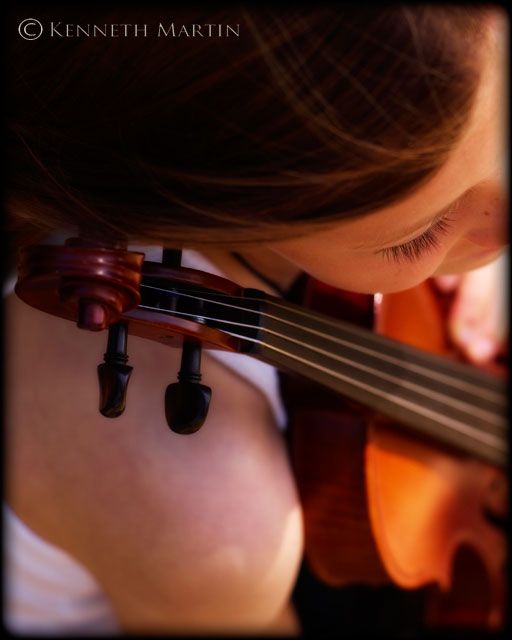
Laura - Location Portrait
My main discipline and first love is location portraiture, This image of Laura was commissioned by her parents to commemorate passing her 5th grade violin exam.
This image was amongst the last shots of the session, shot directly from above with a wide aperture and focus on the eyelashes, the image is both meaningful and creative. I am delighted to say that the family chose this image as the main wall portrait. The incredible sharpness of the lens makes the eyelashes the dominant feature and the natural warmth draws the viewer into the image.
Phase One DF camera / P40+ . 110mm Leaf Lens . 100 ISO . Hand Held . Manual Exposure Mode . Minolta Meter . 1/250s @ f2.8 . Daylight from right / No reflector . WB - Flash
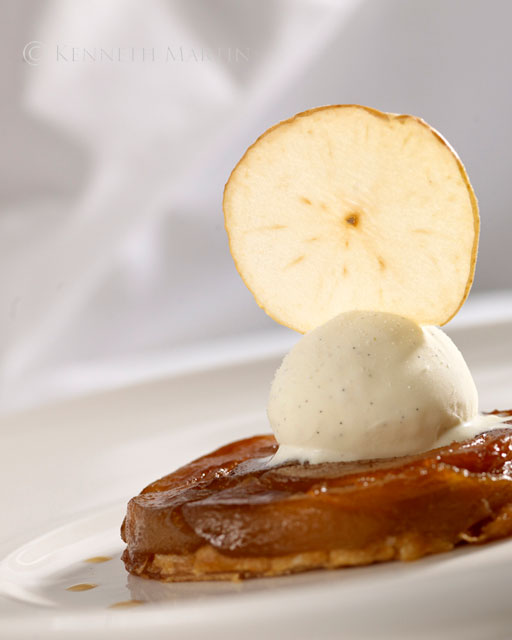
So the final option was to look at the Phase One DF camera, I must admit I was very concerned that the camera was based on the Mamiya 645 body, my memories of this particular camera are not happy ones, my studio used to have 8 Mamiya 645's and at any one
time we had at least 2 in for repair, they were light, flimsy cameras, plagued by shutter problem, which gave neither me nor my staff no real confidence in using them. I was assured by Phase One that since taking control of
Mamiya all the research and development of the camera and internal electronics were being handled by Phase One. You can imagine my delight when I finally received a demo camera to find out that not only was the camera completely redesigned, it was utterly solid in it's construction and in fact some may say it is overly heavy but it feels absolutely amazing, 8 years of shooting with the Hasselblad H system which became a natural extension of my hands were wiped out in a couple of days, the camera is beautifully balanced and feels like a slightly overweight 35mm rather than a medium format camera, beautiful looking and ergonomically laid out making it really easy to use in everyday assignments.
So my initial impressions were positive, but what about the practical details, one thing I did have a major problem with in the past was the locking mechanism between the Phase One back and the camera body on the H system - there wasn't one!! Because of the way I shoot, camera on tripod and slung over my shoulder, more than one back has parted company with the camera body and ended up on the floor, many times I was lucky with the camera landing chip side up on grass, but twice I was unlucky with backs landing chip side down on gravel. I was so paranoid about this that black insulating tape was the only way I was happy the camera was safe. I know that this was a problem more associated with the H body as opposed to a design fault with the back as I had many conversations with both Hasselblad and Phase One and the conclusion seemed to be that Hasselblad seemed non too concerned that there was a problem and did not seem too keen in helping.
I am delighted to inform you that the new camera back has a safety catch which works great and the black insulating tape has gone. Never looked very good on a £20,000 camera anyway.
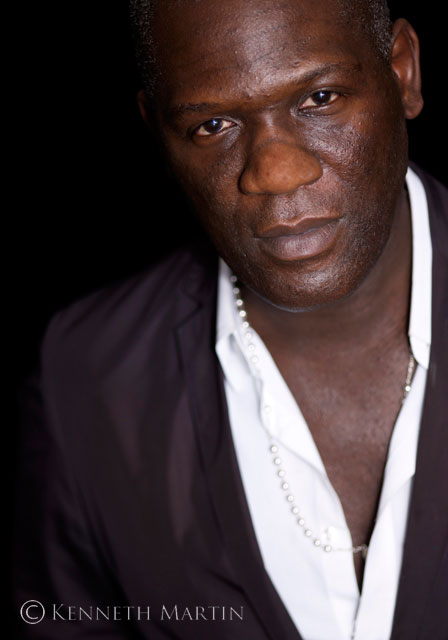
I purchased 3x Schneider Kreuznach lenses with the kit, which are amongst the most respected optics available anywhere in the world The amazingly wide 28mm f2.8, the 80mm 2.8 leaf lens and the lens I use most of the time, a 110mm f2.8 leaf, the advantage of course with the leaf lenses is the ability to flash sync at 1/1600s with the P40+ & the P65+, as long as you are of course using appropriate and fast enough flash units.
All the lenses have performed very well and I have only 2 small gripes, both with the wide angle. The built in lens hood is proving to be difficult to attach filters to, the only way I can use my preferred glass Lee Filters is to buy a Cokin universal holder which takes Cokin 130mm resin filters, Lee only make filters to 100mm but will custom make (at great expense) 130mm filters but unfortunately not the Big Stopper which is the filter I would most use. The second gripe is the AF/MF ring which is a slider on the barrel of the lens which can very easily be knocked to manual focus if you do not keep your wits about you. I much prefer the turning AF/MF ring on the other lenses.
So that is the camera, what about the P40+ Digital Back? Once again it is beautiful looking, as are all the Phase One Backs. It is dead simple to operate with only 4 big buttons for Play, ISO, WB and Menu which leads you to an extremely simple menu with Capture options, Play options, 645 Camera setup options and Configuration options. The other thing which a apparent as you look at the back is the lack of air vents for the internal fans to cool the back down, that is because there is no fan in the back. Phase One Digital Backs use a technology called sleeping architecture, this eliminates the need for noisy fans by putting the back to sleep between captures, when the shutter is pressed the back comes to life, takes the capture and then promptly goes back to sleep until the next capture, this is one of the main reasons for my loyalty to the brand over the past 12 years or so. In all that time I have not had a single problem with any back I have owned, They are the most hard wearing backs I have used and if in the very rare occasion a back does break down the replacement swap out service with the value added 3 year warranty is second to none, giving great peace of mind.
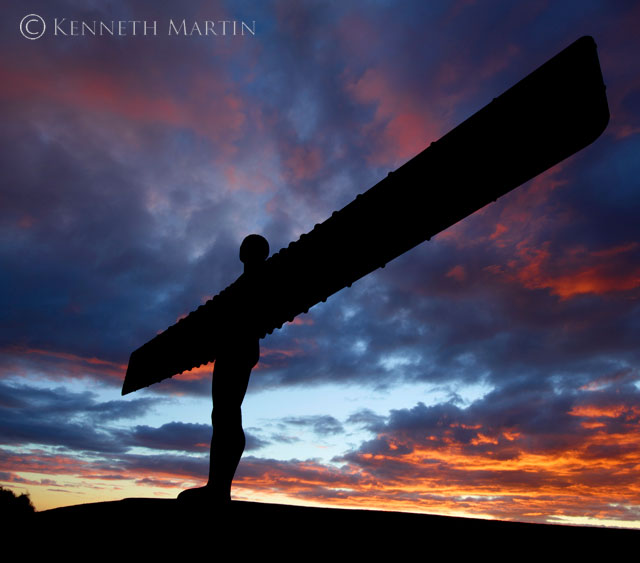
Landscape - The Angel of the North
As mentioned in the review, the camera is a landscape photographers dream, ultra wide (at least ultra wide for Medium Format) 28mm Lens combined with an amazing dynamic range of 12.5 stops. This almost eliminates the need for Graduation filters as there are very few images which exceed 12.5 stops. This means in practice that less shots are lost as you all know how quickly the light changes, especially at the crucial times of sunrise and sunset. This shot took no more than a couple of minutes to set up and shoot, there were around 5 other photographers shooting the same scene, I arrived after them and left before them as I watched them messing around with their Graduated filters.
Phase One DF Camera / P40+ Back . 28mm Lens . Tripod . 50 ISO . Aperture Priority - 1s @ f32 . WB - Flash
Some of you may be wondering what all this Sensor+ technology is about. The P40+ and the P65+ backs both have the brand new Sensor+ chips, this allows you to shoot either at the full resolution of 40mp or should you wish at 10mp. This is achieved by dumping pixels and is accessed by changing the ISO settings. For 40mp files you can shoot at ISO's between 50 ISO and 800 ISO with Sensor+ turned on you can shoot at 200+ ISO which will give you the smaller file size of 10mp BUT to all intents and purposes the same quality as 50 ISO. It is achieved simply using a 1/4 of the pixels. 3200+ ISO will give you a 10mp file but with the quality of 800 ISO. I must be honest and confess that I never thought I would use this function but I have gradually grown to love the feature, I almost always shoot my location portraits using 800+ or 1600+ ISO and the re- sults are astonishing, only last night I was shooting stage shots in very low light at 3200+ ISO and the results are superb, this would have been almost impossible using my DSLR camera.So that is the technology and the actual camera system explained but what is it actually like out in the field? I have been a very busy boy since receiving the camera and with shoots as diverse as studio fashion, loca- tion fashion, product, food, commercial portraits, woodland portraits, landscapes and 3 or 4 workshops, the camera has certainly been put through it's paces. Some general observations on the camera as compared with the Hasselblad H System:The auto focus is much sharper and accurate on the Phase One camera, it actually works more like a 35mm. I am using the camera a lot more as a hand held tool as the ergonomics of the camera make it so much easier to hand hold than the Hasselblad. The files from the new P40+ back are much superior at higher ISO's than the old P30 back. Flash sync is slightly faster at 1/1600s and works really well, but in my experience, only if it hard wired or using the compatible Metz speedlights. As I write this review the new V grip with built in wireless has just been ordered and although I have not yet tried I believe that it syncs beautifully at 1/1600s with the Profoto Air flash kits.I have to say that I am missing my old 120mm Macro and 200mm Hasselblad lenses, this will be my next purchase. But on the flip side, even although the 110mm f2.8 is a shorter focal length the compression and beautiful creamy out of focus backgrounds I have been achieving in my portraiture is a joy to see.
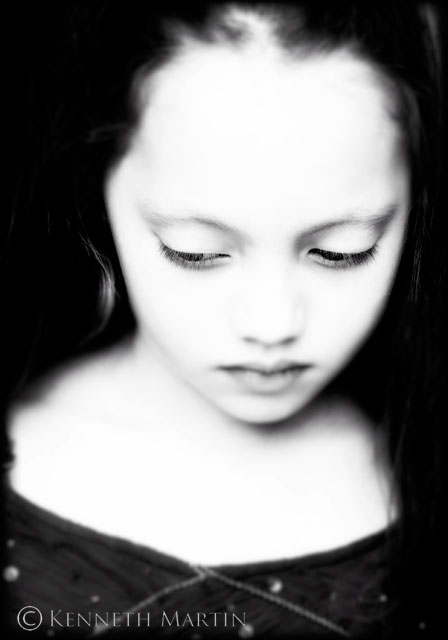
Although I tend to use manual metering in almost all my work, I obviously use the built in metering, usually set to aperture priority, for my landscapes, the one main difference I have noticed is that the meter seems more accurate in the Phase One camera, I got so used to the images on the Hasselblad being slightly underexposed that I used to dial in + 1.5 exposure compensation as a standard and the images were still down the shadow end of the histogram.MASSIVE Dynamic Range. This is it guys, the one reason for buying this camera, a genuine 12.5 stops of Dynamic Range. The files straight off the camera are utterly astounding, rich tones and with detail that is only achievable with other cameras by using HDR software in post production
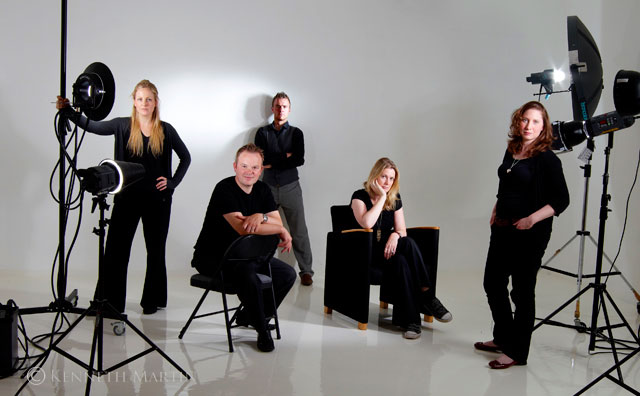
Studio Portrait
I had the pleasure of shooting updated promo pictures of my amazing Photography Team in the Edinburgh Studio. The team were photographed using 5 different light sources in one of our 2 identical 35ft x 25ft studios. From the left - Hannah is shot using a Bowens Ring Flash, Chris is lit by Broncolor snoot, David at the back is split lit by the amazing Broncolor Satellite, Debbie who is seated is lit by a Bowens 750 Digital with barn doors and Helen is lit by a Broncolor head with a dish reflector. Each light was individually metered. The amazing clean quality of the file produced will enable us to print this at over 50" with no loss of quality.
Phase One DF Camera / P40+ Back . 80mm Leaf Lens . Various Flash Units . Tripod . 50 ISO . Manual Exposure . 1/60s @ f12 . WB - Flash
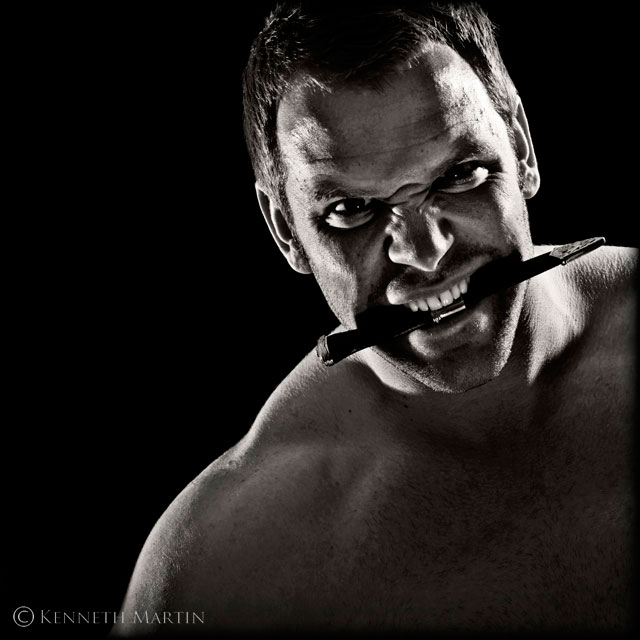
Advertising Campaign
Part of an advertising campaign for the Kilt Store. Dramatic lighting has been used here to give drama and power to the image, The Kilt Store have been pioneering different avenues in advertis- ing, the traditional image of ‘Bonnie Scotland' with a kilted model standing beside a beautiful Scot- tish loch has been replaced by some new ‘in your face' advertising by a forward thinking company, The last campaign called ‘Have you the balls to wear it', which I also shot, and the new ‘Scottish Beef wear Scottish Kilts' are a good example how a staid marketplace can be moved up a gear or two by powerful photography. The Phase One Camera was the perfect tool for this job as the in- credibly high quality images are being used everywhere from the Web Site to Billboards
Phase One DF Camera / P40+ Back . 80mm Leaf Lens . Bron Studio Lighting . Hand Held . 50 ISO . 1/125s @ f11 . WB - Flash . BW conversion made in Capture One
Model : Neil Rae represented by Mannequin Page

In conclusion I think this is just about the ultimate camera package, as a GP who covers almost every discipline, it is yet to let me down, the addition of another couple of longer lenses over the next year or so will make this the best camera system I will have ever owned. For commercial photographers the introduction of the 28mm is a tremendous boost to Medium Format shooting and makes
it a very serious contender. For the professional landscape photographer the dynamic range would be enough to make me go and buy one tomorrow, and if you are a GP shooting DSLR you have no idea what you are missing.
I have always bought my Phase One kit from Chris Ireland at Direct Digital Imag- ing, his knowledge on both the hardware and software is second to none and his advice has been invaluable over the past 12 years of using Phase One.
Do yourself a favour, phone Chris today on 0113 2370563 or email him on sales@ directdigitalimaging.co.uk and put the camera through it's paces, otherwise you will never know what all the hype is about!
Beauty Portrait
As a GP photographer you really have no idea what you might be photographing next. This assignment was to shoot images of non surgical procedures, Botox, Fillers etc but also included before and after shots of the lady volunteers. It was vitally important hat the images were as natural as possible and absolutely no Photoshop work could be done. The Phase One camera was ideal as the files straight off the camera were quite beautiful with simple natural colours. The lighting was a 1 meter soft box to the camera left and a lastolite hi-lite was used as the background at 3 stops more than the main light to bleed ever so slightly into the subject and naturally soften the image.
Phase One DF Camera / P40+ Back . 110mm Leaf Lens . Bowens Portable Flash w Soft Box . Lastolite Hi-Lite 50 ISO . Manual Exposure . 1/125s @ f8 - Background Light set to f22 . WB - Flash
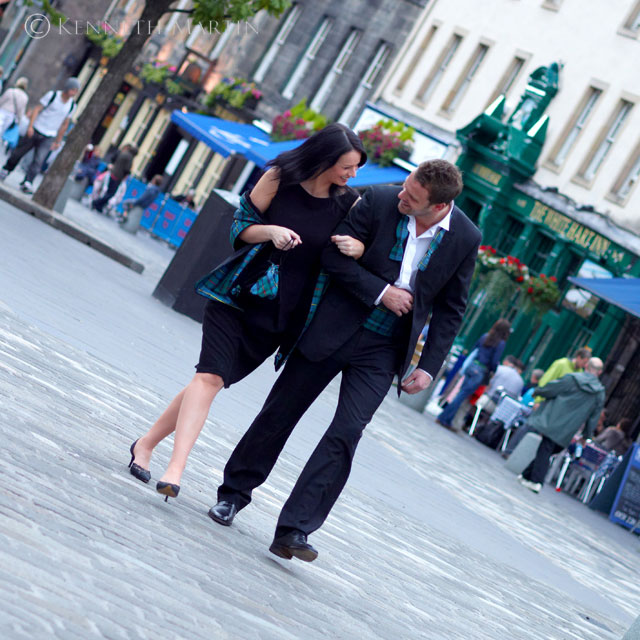
Fashion
An advertising campaign for the www.scotlandshop,net Autumn Collec- tion. Photographed in and around the streets of Edinburgh. This image was shot in the Grassmarket using natural light with a single Elinchrome Quantum Ranger portable flash unit as fill. Once again with campaigns like this you never know what the finished results are going to be used for so it is important to achieve the highest quality files possible.
They really do not get much better than the Phase One Camera.
Wedding Portrait
This beautiful wedding image was shot, on the PT4U Wedding Photographers Wanted 2 day work- shop, as a demonstration of using window light with no reflectors or supplementary lighting. The Phase One Camera is a wonderful tool for wedding photography, the detail captured in both the shadows and highlights, due to the extreme dynamic range, is a wedding photographers dream. The excellent files produced at higher ISO settings can be seen here with this 400 ISO capture.Post production using On-One Software Photo Tools 5.Phase One DF Camera / P40+ Back . 110mm Leaf Lens . Window Light . Tripod . 400 ISO Manual Exposure 1/60s @ f4 . WB - Flash
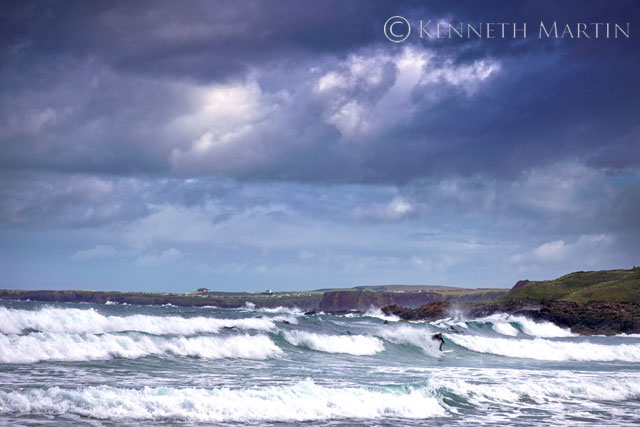
Landscape - Coldingham Surf
The East Coast of Scotland has some wonderful surfing and none is better than Cold- ingham Bay, just up the coast from Eyemouth. This shot is a personal image pho- tographed during a family day out. I just loved the stormy sky in contrast with the amazing waves. When this image was opened in Capture One there was no clipping anywhere on the file. Incredible detail throughout the image especially in the shadow areas of the rocks. I have deliberately given the waves more contrast to bring the view- ers attention to the bottom of the image towards the surfer.Phase One DF Camera / P40+ Back . 110mm Leaf Lens . Hand Held . 200 ISO Aperture Priority - 1/4000s @ f4 . WB - Flash
Editorial Portrait - Richard Nisbet
Part of a long term project called (A Portrait of a Borders Town). Shot using the Phase One DF Camera with a 28mm Lens, using available dappled light as the main light source. I had to position Richard so that the light was hitting his face, the ease in which you can hand hold the camera made what could have been a tricky shot reasonably easy although I did take quite a few images because shoot- ing hand held, hanging upside down from the branches of a tree at 1sec @ f2.8,I did get quite a few out of focus!!! The wide open aperture has produced a very shallow depth of field which has worked well in the shot.Phase One DF Camera / P40+ Back . 28mm Lens . Daylight . Hand Held 100 ISO . Manual Exposure . 1s @ f2.8 . WB - Flash
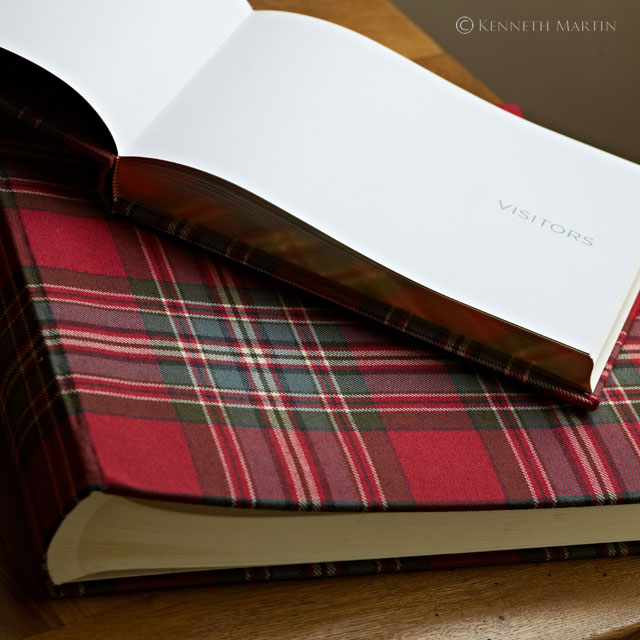
Product - Visitors Book
Part of a series of images shot for the ‘home wear’ department of www.scotland- shop.net, the main advantage of shooting with such a high resolution camera is the detail which is retained even if the images are used for a poster campaign. The extraordinary natural look is one of the main reasons for my love of Cap- ture One and the combination of the Phase One camera and the integration features with Capture One makes it a joy to use.Phase One DF Camera / P40+ Back . 110mm 2.8 Leaf Lens . 50 ISO . Manu- al Exposure Mode . Minolta Meter . Tripod . Daylight from window to right / no reflector . 1/10s @ f5.6
